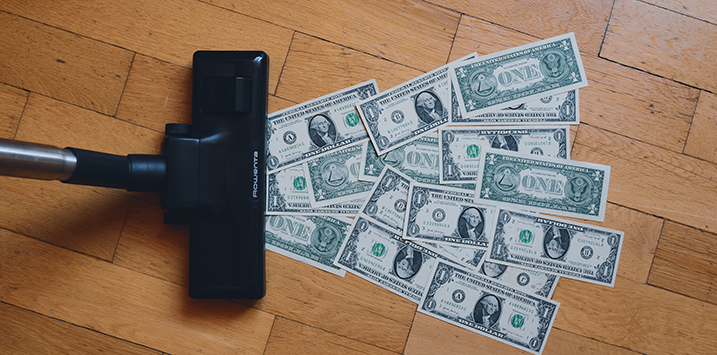
Focus on inflation if you want to profit from market volatility
Global markets are clearly spooked by the U.S. Federal Reserve pushing up interest rates in order to rein in inflation. But fear not. Because inflation is always followed by disinflation. And research shows that shares do very well in a disinflationary environment.
Another week to put the bulls back in their premature place. We have said the head fake in equities would cause pain for those who extrapolated peak inflation to mean an end to Federal Reserve rate hikes.
But the selloff is an opportunity because we believe this phase of U.S. Federal Reserve rate hikes will eventually end amid a disinflationary environment that will be very bullish for equity investors. And while it may seem counterintuitive to be excited as prices fall, I would rather buy high-quality businesses at the lowest possible prices and amid unbridled fear.
As Buffett once advised, ‘be greedy when others are fearful’. And clearly fear is palpable now.
The Fed’s move last week drove another surge in yields on government bonds. The yield on 10-year U.S. bonds jumped 0.2 percentage points, to 3.71 per cent. The yield on the two-year U.S. Treasury note has risen to 4.11 per cent. They were at 0.125 per cent as recently as January 2021. They are now 33 times higher! The two-ten part of the yield curve is therefore heavily inverted suggesting bond market investors expect a recession. With U.S. 30-year mortgage rates hitting 6.29 per cent versus just 2.65 per cent in January last year, recession is a distinct possibility.
For investors, it’s worth watching the Fed’s impacts on the economy. For example, despite U.S. rate rises adding to the costs of borrowing, they haven’t yet impacted delinquencies which remain low across most loan types. The U.S. Federal Deposit Insurance Corporation has reported the rate of noncurrent loans – those 90 days or more overdue – has fallen to 0.75 per cent. This is the lowest level since 2006.
But recent data from the U.S. Consumer Financial Protection Bureau identifies delinquent consumer auto loans with subprime credit scores jumped 33 per cent above the previous high set in 2020 to 2.4 per cent currently. That suggests some cracks in the benign credit environment may be appearing.
And delinquencies in the first two years after a vehicle purchase, for loans originated in 2021 and 2022, are higher relative to loans originated in previous years. Suggesting it’s those who borrowed recently, taking advantage of low rates but those overextending themselves that are starting to suffer as rates rise.
Meanwhile, U.S. sales of previously owned homes slide for a seventh straight month. Thank the sticker shock of surging mortgage rates for that one. And right on cue, demand for new mortgages also plunged, in turn suggesting further house price falls to come. New Zealand and Australia will soon experience the same dynamic. The negative wealth effect will no doubt burst the bubble in a still robust Australian consumer and tip us closer to recession.
But recessions aren’t the opportunity for investors; the inflation picture is what you should really be watching.
We have previously pointed out Gavekal Research findings from the 1970s that revealed innovative growth stocks do very well in a disinflationary environment. By way of reminder, ‘disinflation’ is not deflation. Deflation is declining prices. Disinflation is consecutively lower rates of positive inflation.
Well, it now seems NYU has put some numbers to the observation. Using U.S. 10-year treasuries and inflation data between 1928 and 2021, along with S&P500 data over the same period they discovered the following:
- In a rising inflation environment, the S&P500 returned 5.5 per cent p.a.,
- In a falling inflation environment (disinflation) S&P500 returned 14.7 per cent p.a.,
- A rising 10-year bond rate environment returned 9.7 per cent p.a., and
- A falling 10-year bond environment returned 9.6 per cent p.a.
So, it seems the direction of bond yields is immaterial to equity market returns however whether inflation is decelerating or accelerating has a material impact.
This was reinforced in research produced by Gavekal Research in 2020, revealing investing in the S&P500 only when the environment was disinflationary, since 1879, resulted in the same return as the S&P500 but after being invested only half the time and thereby materially reducing exposure to the market. Indeed, investing only in the disinflationary periods avoided all significant bear markets with the exception of two: the great depression and the tech rout after 2000.
Inflation is always followed by disinflation and bear markets are always followed by bull markets. Don’t forget that as fear of how far or high the U.S. Fed goes paralyses other investors.